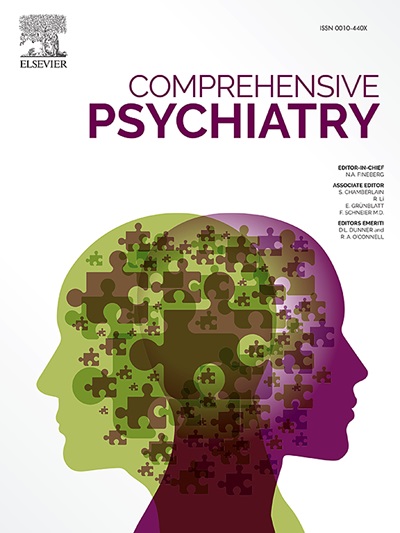Item response theory analysis of the Chinese version compulsive shopping scale
IF 4.2
2区 医学
Q1 PSYCHIATRY
引用次数: 0
Abstract
Compulsive shopping, a behavioral disorder with significant personal and social repercussions, necessitates reliable assessment tools, especially within different cultural contexts. While several scales exist to measure compulsive buying behavior, there is a lack of validated instruments tailored to the Chinese population. This study aimed to examine the psychometric properties of the Chinese version of the Compulsive Shopping Scale (CSS) using Item Response Theory (IRT). A total of 637 young healthy participants (42.5 % males and 57.5 % females), with a mean age of 21.32 years (SD = 2.06), both undergraduate and postgraduate students, were recruited from various cities in China. Sixty-four participants were retested after a two-week interval to assess test-retest reliability. The results indicated that a one-dimensional factor structure was appropriate. The reliability analyses, including test-retest reliability, ω, α, and λ6 tests, demonstrated good internal consistency. The rating scale model analysis showed infit and outfit MNSQ values between 0.6 and 1.4, indicating a good fit. The item information curve and test information curve indicated a normal distribution of scores. Differential item functioning was observed in two items, suggesting potential gender-related differences. These findings indicate that the Chinese version of the CSS is a reliable and valid instrument for measuring compulsive shopping behaviors in Chinese populations.
中文版购物强迫量表的项目反应理论分析。
强迫性购物是一种会对个人和社会产生重大影响的行为障碍,因此需要可靠的评估工具,尤其是在不同的文化背景下。虽然目前已有多种量表可用于测量强迫性购物行为,但仍缺乏适合中国人群的有效工具。本研究旨在利用项目反应理论(IRT)检验中文版强迫购物量表(CSS)的心理测量学特性。本研究从中国多个城市招募了 637 名年轻健康的参与者(男性占 42.5%,女性占 57.5%),平均年龄为 21.32 岁(SD = 2.06),包括本科生和研究生。间隔两周后对 64 名参与者进行了重测,以评估重测信度。结果表明,一维因子结构是合适的。信度分析,包括重测信度、ω、α 和 λ6 检验,均显示出良好的内部一致性。评分量表模型分析显示,infit 和装备 MNSQ 值介于 0.6 和 1.4 之间,表明拟合良好。项目信息曲线和测验信息曲线显示得分呈正态分布。在两个项目中观察到不同的项目功能,这表明可能存在与性别有关的差异。这些研究结果表明,中文版强迫购物行为测验是测量中国人强迫购物行为的可靠有效的工具。
本文章由计算机程序翻译,如有差异,请以英文原文为准。
求助全文
约1分钟内获得全文
求助全文
来源期刊

Comprehensive psychiatry
医学-精神病学
CiteScore
12.50
自引率
1.40%
发文量
64
审稿时长
29 days
期刊介绍:
"Comprehensive Psychiatry" is an open access, peer-reviewed journal dedicated to the field of psychiatry and mental health. Its primary mission is to share the latest advancements in knowledge to enhance patient care and deepen the understanding of mental illnesses. The journal is supported by a diverse team of international editors and peer reviewers, ensuring the publication of high-quality research with a strong focus on clinical relevance and the implications for psychopathology.
"Comprehensive Psychiatry" encourages authors to present their research in an accessible manner, facilitating engagement with clinicians, policymakers, and the broader public. By embracing an open access policy, the journal aims to maximize the global impact of its content, making it readily available to a wide audience and fostering scientific collaboration and public awareness beyond the traditional academic community. This approach is designed to promote a more inclusive and informed dialogue on mental health, contributing to the overall progress in the field.
 求助内容:
求助内容: 应助结果提醒方式:
应助结果提醒方式:


